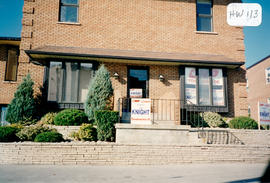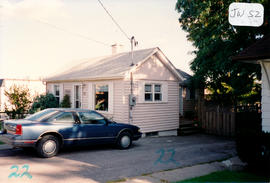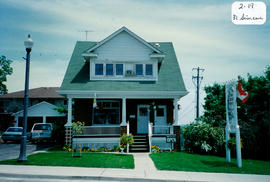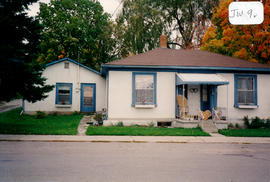113 Holland Street West - Art Saint House
- CA BWGPL GJ-HB-2017-04-01-07
- Item
- 1995
Parte de George Jackson fonds
Builder A.J. (Arthur) Saint and his wife Margaret once lived in the structure located at 113 Holland St. West. Art bought the house in 1931 and completely remodeled it. He added a walk-in refrigerator and a two-car garage in the old summer kitchen and woodshed. At the back of the lot at that time there was a two-storey barn that Art turned into a workshop. He had three children (Keith, Helen and Karen). Art died in 1952 and the house was sold a couple of years later to John DePeuter. It was later remodeled and bricked again as seen in this photo from 1995. (1, 2)
Sem título







